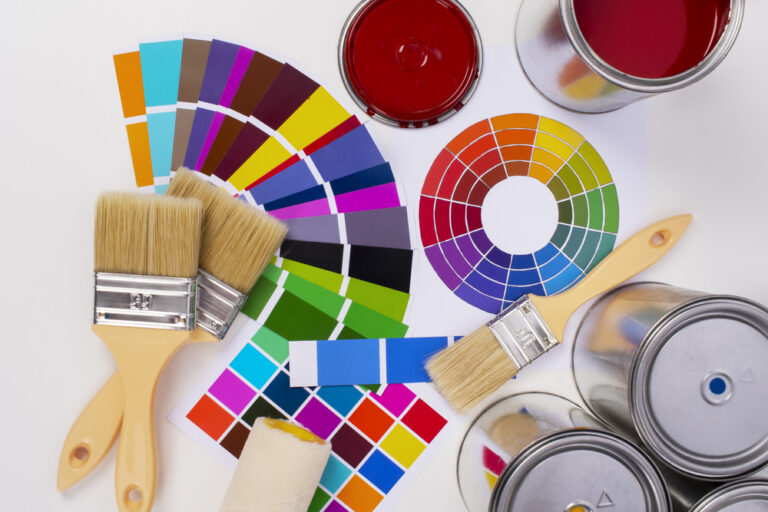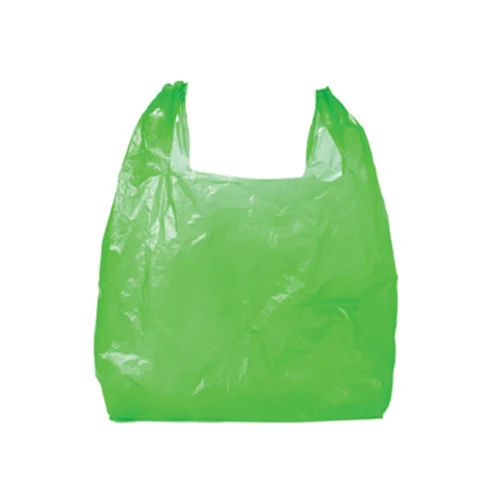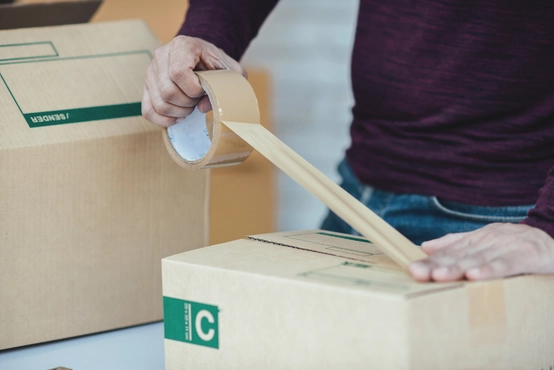Paper tape for plasterboard - the key to durable joints
When working with drywall, the selection of appropriate finishing materials plays a key role. One of the most important elements, which determines the durability and aesthetics of the surface, is drywall tape. This tool allows you to strengthen board joints, eliminate cracks and provide a perfectly smooth finish. In this article we will discuss in detail the use, benefits and working techniques to achieve a durable and professional result.
What is a paper tape?
Definition and application
This product has a key function in construction and finishing. It is primarily used to reinforce the joints between plasterboards, enabling a durable and aesthetic finish. Thanks to its structure, it ensures an even bond, minimizing the risk of cracks at the joints. It is a popular choice for both professionals and do-it-yourself renovators.
Materials and properties
- Mechanical strength: The appropriate thickness of the material guarantees resistance to stretching.
- Flexibility: Easy adjustment to corners and different surfaces.
- Moisture Resistance: Suitable for standard household applications.
Comparison with other solutions
- Paper products are more durable in the corners than mesh ones, which are sometimes less aesthetically pleasing.
- Fiberglass provides more flexibility, but may not offer as precise a finish.
- Self-adhesive nets are simpler to apply, but less durable on heavily used surfaces.
Applications in working with plasterboard
Joint reinforcement
This material plays a key role in bonding gypsum board. Proper bonding into the joint compound prevents cracking and guarantees smooth surfaces ready for painting or wallpapering.
Reinforcement process:
- Apply a layer of compound at the joint.
- Paste the paper piece, pressing down with a spatula.
- Cover the whole thing with another layer of the mixture to even out the surface.
Masking of cracks
When cracks appear at the joints of the boards, paper reinforcements help mask them effectively. The structure of the material eliminates visible damage, reinforcing these areas.
How to do it?
- Clean the surface around the crack.
- Apply a layer of compound and paste the paper piece.
- Gently level with another layer of putty.
Finishing corners
Internal and external corners require special attention. The perforated paper design allows for precise adjustment to the angle, and the additional support of metal profiles increases the durability of the outer corners.
Advantages of use
- Increased durability: Reinforced joints and corners resistant to mechanical damage.
- Aesthetics: Smooth surfaces that can be easily painted or wallpapered.
- Ease of application: It does not require specialized equipment, making it a versatile choice for different users.
With the proper use of reinforcing materials, a durable and professional finish on plasterboard can be achieved. Both professionals and do-it-yourself renovators can easily achieve aesthetic and functional results.
Benefits

Strength and durability of joints
One of the main reasons to choose paper reinforcing material for plasterboard is its ability to stabilize joints between boards. This makes the joint areas more resistant to the stresses caused by the movements of the building structure. Combining this element with the appropriate joint compound creates a durable and stable surface that is resistant to cracking. The strength of the solution allows for long-term use without the need for touch-ups, making it an economical choice for finishing work.
Aesthetics of finishing
The paper reinforcing material provides an exceptionally aesthetic end result. When properly applied, the joints are almost invisible, making it possible to achieve perfectly smooth surfaces on walls and ceilings. The end result looks professional, and the walls are ready for further processing, such as painting or wallpapering. With this method, the risk of visible defects, such as unevenness or discoloration, is minimized.
Ease of painting and filling
Compared to other reinforcing materials, the paper variant works perfectly with joint compound and paints. Its structure allows even coverage, which significantly facilitates painting. Paint or other finishing materials easily adhere to the surface, which improves aesthetics. In addition, the paper piece does not absorb moisture as much as fiberglass, which ensures a uniform texture during filling and painting.
How to properly apply paper reinforcement material?
Substrate preparation
The effectiveness of the application depends on the proper preparation of the surface. The boards should be clean, dry and free of dirt.
Preparatory steps:
- Remove dust and dirt with a dry cloth or vacuum cleaner.
- For porous surfaces, use a primer to increase the adhesion of the joint compound.
- Smooth out any irregularities and cavities in the edges of the boards.
Application of joint compound
The compound is a key element in the application process. Its proper distribution ensures the durability and aesthetics of the joint.
Application technique:
- Apply an even layer along the length of the joint, using a suitable spatula.
- The consistency of the compound should be thick enough not to move the pasted parts, but flexible enough to allow them to blend in.
- Fill the space between the plates, creating a stable base.
Pasting the material
The paper piece should be pasted on wet paste, which guarantees its permanent adhesion.
Paste process:
- Place the paper in the center of the weld and press gently.
- Using a spatula, evenly blend the material into the mass, eliminating air bubbles.
- At the inside corners, fold the piece along the perforations to precisely match the angle.
Final filling and smoothing of the surface
After pasting the paper piece, apply another layer of paste to level the surface and achieve an aesthetically pleasing finish.
Smoothing technique:
- Spread the compound wider than the original joint so that the edges blend seamlessly into the rest of the surface.
- Use a wide spatula to get an even surface without excess compound.
- Once dry, gently sand the whole thing down with fine-grit sandpaper to remove irregularities.
Tip: When sanding, avoid applying too much pressure so as not to damage the compound layer or paper reinforcement.
Proper use of paper reinforcing material in plasterboard work is a guarantee of durable and aesthetic results. Attention to detail at every stage - from substrate preparation, through the application of the compound, to smoothing - makes it possible to obtain surfaces resistant to cracks and other damage.
Most common mistakes when working with weld reinforcement material
Too thin a layer of joint compound
One of the main mistakes is applying too little joint compound. This leads to a lack of adequate support for the reinforcing element, resulting in cracks and unevenness at the joint.
How to avoid it?
- Apply enough compound to fill the space between the boards.
- Use a spatula of sufficient width to spread the material evenly.
- Make sure the mass is sufficiently wet to facilitate pasting.
Improper trimming of the material
Imprecise cutting can cause difficulties during application. Fragments that are too short will not cover the joint, and excess can make it difficult to apply the compound.
Tips:
- Trim the pieces so that they are slightly longer than the length of the weld.
- Use sharp tools such as scissors or a knife to avoid frayed edges.
Inaccurate pasting in corners
Corners require special precision. An inaccurate fit can result in air bubbles and weaken the joint.
How to avoid it?
- Fold the material along the perforations before applying at the inside corners.
- Press thoroughly with a spatula, eliminating air bubbles.
- Make sure that the material is fully covered with the compound, which will increase the durability of the joint.
Tips and advice for professionals and amateurs
Choosing the right materials
Choosing the right product is the basis for a durable and aesthetically pleasing finish. It is worth betting on high quality, which facilitates work and ensures durability.
What to look out for?
- Material: Durable paper resistant to stretching.
- Perforation: Facilitates folding and application in corners.
- Trusted manufacturer: Products from reputable companies perform well in a variety of working conditions.
How to avoid cracks and bumps
Errors in work technique or improper preparation of the substrate often lead to problems with the durability and aesthetics of the joints.
Key principles:
- Apply the right amount of compound so that the reinforcing element is completely blended in.
- Spread the compound evenly over the entire width of the joint.
- Once dry, gently sand the surface for a perfectly smooth finish.
Optimal working conditions
Ambient conditions, such as temperature and humidity, have a significant impact on the quality of the work. Too high humidity or low temperature can prolong the drying time of the compound, while drafts and direct sunlight can dry it out too quickly.
Recommended conditions:
- Temperature: 15-25°C.
- Humidity: 40-60%.
- Work in stable conditions, avoiding sudden changes in the environment.
By following these tips, you will more easily avoid mistakes and achieve lasting, aesthetic results when working with with paper tape for plasterboard.
Frequently asked questions about paper reinforcing materials for plasterboard
Are paper reinforcements better than self-adhesive ones?
Yes, in many cases paper pieces are superior to self-adhesive in terms of durability and aesthetic finish. They are more effective in corners and in areas subject to structural stress. Self-adhesive variants are easier to apply, but their durability may be insufficient in demanding projects.
How long does the finishing process take?
The working time depends on the size of the surface and the number of joints. On average, the process takes from several hours to one working day, taking into account the time needed for the compound to dry. Each layer should dry from 12 to 24 hours before applying the next layer.
Can paper reinforcing materials be used in rooms with high humidity?
Yes, but it is necessary to use the right finishing materials, such as waterproof joint compound and moisture-resistant paint. In such cases, it is especially important to prepare the substrate well and use a primer that improves adhesion.
Work with any tape with logo or without, regardless of its type, requires care and proper preparation, but following best practices achieves durable and aesthetically pleasing results. Proper selection of materials, avoidance of mistakes and adaptation of working conditions to product specifications guarantee a professional finish for many years.







